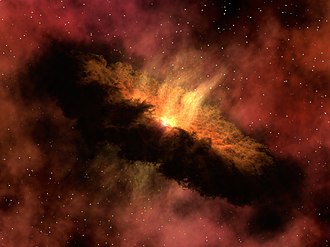Geological history of Earth
File:Tectonic plate model 1Ga.webm
Geological history of Earth refers to the development and changes on the planet Earth from its formation about 4.54 billion years ago to the present day. This history is divided into several key eons, eras, periods, epochs, and ages that represent significant events in the geological, climatological, and biological evolution of Earth.
Precambrian Time
The Precambrian Time spans from the formation of the Earth about 4.54 billion years ago to the start of the Cambrian Period about 541 million years ago. It is divided into the Hadean, Archean, and Proterozoic eons. During the Precambrian, the Earth's crust cooled, the first continents formed, and life began to emerge.
Hadean Eon
The Hadean Eon (4.54 to about 4 billion years ago) is characterized by the formation of the Earth and the creation of the planet's first crust. No known rock record exists from this time, but it is believed that the surface was molten and that the atmosphere and oceans were forming.
Archean Eon
The Archean Eon (4 billion to 2.5 billion years ago) saw the formation of the Earth's first stable continents and the emergence of life, primarily in the form of simple single-celled organisms. The atmosphere was devoid of oxygen.
Proterozoic Eon
The Proterozoic Eon (2.5 billion to 541 million years ago) is marked by the buildup of oxygen in the atmosphere, known as the Great Oxidation Event, and the appearance of more complex life forms, including the first multicellular organisms.
Phanerozoic Eon
The Phanerozoic Eon covers the last 541 million years of Earth's history, from the beginning of the Cambrian Period to the present. It is divided into three eras: the Paleozoic Era, the Mesozoic Era, and the Cenozoic Era.
Paleozoic Era
The Paleozoic Era (541 to 252 million years ago) is known for the Cambrian Explosion, a rapid diversification of life that resulted in the appearance of many of the major groups of animals. This era ended with the largest mass extinction in Earth's history, the Permian-Triassic extinction event.
Mesozoic Era
The Mesozoic Era (252 to 66 million years ago) is often called the Age of Reptiles because of the dominance of dinosaurs. This era ended with the Cretaceous-Paleogene extinction event, which led to the extinction of the dinosaurs and paved the way for mammals to become the dominant land animals.
Cenozoic Era
The Cenozoic Era (66 million years ago to the present) is the current era of geological time. It has seen the rise of mammals and birds, the formation of modern continents and ocean basins, and the development of the current climate.
Current Geological Period
The current geological period is the Quaternary Period, which began about 2.58 million years ago and continues to the present day. It is characterized by a series of ice ages and the evolution of Homo sapiens.
Transform your life with W8MD's budget GLP-1 injections from $125.
W8MD offers a medical weight loss program to lose weight in Philadelphia. Our physician-supervised medical weight loss provides:
- Most insurances accepted or discounted self-pay rates. We will obtain insurance prior authorizations if needed.
- Generic GLP1 weight loss injections from $125 for the starting dose.
- Also offer prescription weight loss medications including Phentermine, Qsymia, Diethylpropion, Contrave etc.
NYC weight loss doctor appointments
Start your NYC weight loss journey today at our NYC medical weight loss and Philadelphia medical weight loss clinics.
- Call 718-946-5500 to lose weight in NYC or for medical weight loss in Philadelphia 215-676-2334.
- Tags:NYC medical weight loss, Philadelphia lose weight Zepbound NYC, Budget GLP1 weight loss injections, Wegovy Philadelphia, Wegovy NYC, Philadelphia medical weight loss, Brookly weight loss and Wegovy NYC
|
WikiMD's Wellness Encyclopedia |
| Let Food Be Thy Medicine Medicine Thy Food - Hippocrates |
Medical Disclaimer: WikiMD is not a substitute for professional medical advice. The information on WikiMD is provided as an information resource only, may be incorrect, outdated or misleading, and is not to be used or relied on for any diagnostic or treatment purposes. Please consult your health care provider before making any healthcare decisions or for guidance about a specific medical condition. WikiMD expressly disclaims responsibility, and shall have no liability, for any damages, loss, injury, or liability whatsoever suffered as a result of your reliance on the information contained in this site. By visiting this site you agree to the foregoing terms and conditions, which may from time to time be changed or supplemented by WikiMD. If you do not agree to the foregoing terms and conditions, you should not enter or use this site. See full disclaimer.
Credits:Most images are courtesy of Wikimedia commons, and templates, categories Wikipedia, licensed under CC BY SA or similar.
Contributors: Prab R. Tumpati, MD





